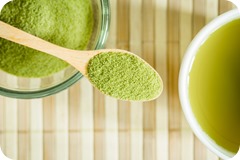The perception of dry mouth (known as xerostomia) affects up to 40% of adults in the U.S. and can have a significant effect on quality of life. Causes can include medications, diabetes, Sjogren syndrome and hormonal changes such as menopause. Previous animal and laboratory studies provided evidence that green tea polyphenols could be beneficial for xerostomia.
The current human study used a double-blind, placebo-controlled, randomized design comparing green tea to xylitol. The study involved 60 individuals (58  women and 2 men) with the complaint of dry mouth and had Sjogren syndrome mediated salivary gland hypofunction, with 30 taking the placebo and 30 taking the green tea medicine. The green tea proprietary formula contained green tea catechins and other ingredients (amounts not given; but internet search reveals the following information: Xylitol, Sorbitol, Natural Flavors, Green Tea (Leaf), Acadia Gum, Jaborandi Extract (Leaf), Magnesium Stearate, Silicon Dioxide, Sucralose). The placebo contained 500 mg xylitol and other non-plant ingredients. Participants took 1 lozenge every 4 hours for a maximum of 6 lozenges per day, over an 8 week period. Quality of life assessments and saliva collection with volume determined were used to evaluate response.
women and 2 men) with the complaint of dry mouth and had Sjogren syndrome mediated salivary gland hypofunction, with 30 taking the placebo and 30 taking the green tea medicine. The green tea proprietary formula contained green tea catechins and other ingredients (amounts not given; but internet search reveals the following information: Xylitol, Sorbitol, Natural Flavors, Green Tea (Leaf), Acadia Gum, Jaborandi Extract (Leaf), Magnesium Stearate, Silicon Dioxide, Sucralose). The placebo contained 500 mg xylitol and other non-plant ingredients. Participants took 1 lozenge every 4 hours for a maximum of 6 lozenges per day, over an 8 week period. Quality of life assessments and saliva collection with volume determined were used to evaluate response.
After 8 weeks of therapy, the xylitol-containing placebo failed to affect saliva output while the green tea catechin containing formulated resulted in a statistically significant increase in saliva output with a 3.8 fold increase in unstimulated saliva output and a 2.1 fold increase in stimulated saliva output, compared with baseline. This occurred within 1 week. Both groups experienced a quality of life scored demonstrating significant improvement with no significant difference between groups.
Commentary: Most commercial products for xerostomia contain xylitol although it has not been known if xylitol does in fact play a role in saliva output. A xylitol chewing gum, a sorbitol containing lozenge and a xylitol containing spray previously showed no efficacy in stimulating saliva in patients with xerostomia. Other research using a maltose-containing lozenge found a potential benefit for xerostomia and another with a 1% malic acid spray did show a modest increase in salivary flow rates. It is not clear why there is a discrepancy between salivary output-increase in the treatment medication compared to placebo vs. the similar effects on subjective quality of life measures. A longer study with more participants would hope to clarify and produce greater results in the treatment group not only in objective measures of salivary output but also in subjective quality of life values.
Reference
De Rossi S, Thoppay J, Dickinson D, et al. A phase Ii clinical trial of a natural formulation containing tea catechins for xerostomia. Oral Surg Oral Med Oral Pathol Oral Radiol 2014;118:447-454.

